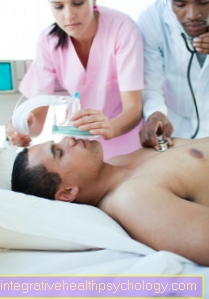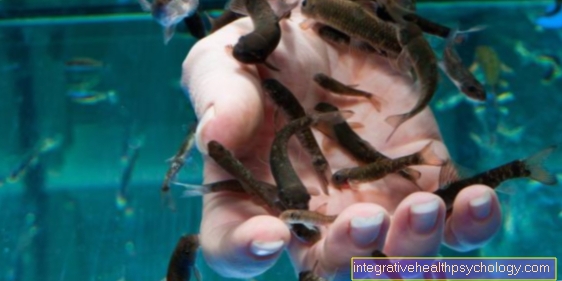Osteosarcoma Therapy
Therapy of osteosarcoma
Therapy used to be limited to the surgical removal of the osteosarcoma. However, since osteosarcomas have a very strong tendency to form metastases, about 20% of all patients already have metastases at the time of diagnosis and probably even more suffer from so-called micrometastases, which cannot be diagnosed using conventional diagnostic methods, a two-phase form of therapy has been adopted.
This "Combination therapy"Includes:
- chemotherapeutic pretreatment
- surgical removal of the tumor
The neoadjunvant chemotherapy performed preoperatively is aimed at reducing the size of the tumor (= volume reduction) before the operation, destroying any invisible micrometastases and ideally achieving devitalization. It will usually be used over a ten-week period.
Following the preoperative chemotherapy, the tumor is surgically removed, which is usually a "radical" procedure. This means that the tumor is cleared out very extensively in order to be able to remove as much of the diseased tissue as possible.
In certain cases it may be necessary to use the chemotherapy to continue even after the operation. Due to the low sensitivity of an osteosarcoma with regard to the use of radiation therapy, it is not considered for the treatment of an osteosarcoma.
Therapy goals:
First and foremost, the preservation of life in the context of a therapy is in the foreground. As a result, a very "radical" approach is taken, especially in the operational area. Of course one tries, for example with osteosarcomas in extremities, to keep the same. However, the goal of healing is always in the foreground, even if this may result in the loss of an extremity.
Due to the sometimes quite unfavorable prognoses, a distinction is made between in the context of therapy
- the healing (= curative) and
- the discomfort-relieving (palliative) approach
As already mentioned, in both cases a balance must be drawn between the greatest possible radicality and the minimum possible functional restrictions.
One speaks of a curative approach if the osteosarcoma was recognized early, is localized and no or very limited metastases (at most one lung metastasis) have been detected. The therapy takes place as part of the "combination therapy" described above. If lung metastases are present, the operative therapy is followed by another six-week chemotherapy, after which another operation may have to be performed.
The complaint soothing (palliative) therapy
usually occurs when there is a generalized tumor disease (osteosarcoma metastases outside the lungs), the primary tumor has to be located on the trunk and / or the primary tumor has to be categorized as inoperable. Since there is usually little prospect of a cure, the therapy has a life-prolonging (= palliative) character.
in the inoperable primary tumorUsually only a symptom-relieving and life-prolonging therapy is considered. The focus is on maintaining quality of life (pain relief, functional maintenance).





























